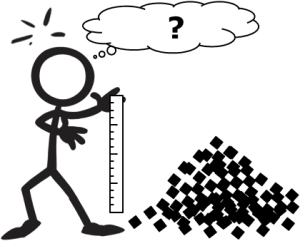How Do You Determine the Appropriate Metrics to Measure Against in Such an Unstructured Environment as B2B Sales?
The key is in your point that B2B sales is an “unstructured environment.” I would argue that it is actually more structured and straightforward than people realize, and that it is our way of understanding it – the words and thinking frames we use – that need improving. 
Consider: When you apply lean and process excellence to manufacturing production you do the following:
- Operationally define the production system: You specify the thing you are trying to create, and the nature of the work required.
- Gather data and use it to make the inner workings of the environment (the “system”) visible and understandable to everyone
- Analyze causes and effects in order to develop theories of how the system works, and how to improve it (countermeasures)
Now, consider the operational definition of the sales and marketing production system: What are you are trying to create? How, exactly, do you create it?
Unfortunately, most businesses have not operationally defined the units of production or methods of production in sales and marketing. As a result, they are using the wrong standard of measurement.
Want proof? Go to several different departments, and ask a few individuals there to define who is “the customer.” Clearly, generating and serving customers is the object of our business so, what is the essential, observable characteristic that defines “customer”?
You generally get foggy, inconsistent answers, and often you can get not just inconsistent, but positively divergent and even contradictory answers. For example:
- When B2B salespeople use a word like “customer” what they may mean is the decision maker within an end-user business who experiences the main operational or financial benefit of that product or service. That’s because the goal of salespeople is to find, win, and keep relationships with these individuals. Their demand pulls transactions (value) through the distribution channels.
- When a department like marketing uses a word like “customer,” they can mean a variety of things, but it is not driven by the same context as salespeople (a HUGE disconnect, by the way). So, if you press them for a definition, you might get something like “the person we ship to who pays the bill” (i.e., the distributor or dealer).
- When a customer service person uses a word like “customer,” they can mean “the person on the end of the phone (distributor, installer, operator, maintenance tech, etc.) who has a problem that needs to be fixed.”
Without meaning to be disrespectful, you could describe this kind of environment as “tribal,” because each department “marches to its own drum,” so to speak.
Can there be any wonder these functional departments have difficulty measuring anything, much less improving how things work? They are talking past each other by definition.
So, to move in the direction of more order and less chaos, the first place to start is with operating definitions. However, you cannot approach this with a dry, academic analysis (like I just did above). Instead, you need to engage your people in ways that make sense and energize them. This is the point of process improvement itself, and what makes it such a huge challenge.
When we first begin working with clients, we generally start with some form of guided discovery, in order to help them achieve a common view of
- Why improvement is needed,
- What success should look like,
- What are some root causes of their situation
- What they can/cannot change
- Where improvement should begin
So, that is a quick response to your question.

